Embark on a journey beyond the trees as we unveil the vibrant avian tapestry of Georgia, home to seven distinctive species of woodpeckers.
From the rhythmic tapping echoing through the forests to the flash of colorful plumage against the bark, Georgia’s woodpeckers contribute to the state’s rich biodiversity.
In this exploration, we’ll delve into these charismatic birds’ unique characteristics and habitats, from the iconic Pileated Woodpecker to the elusive Red-cockaded Woodpecker.
Discover their role in shaping ecosystems, their nesting behaviors, and the conservation efforts to preserve their habitats.
Join us as we traverse the woodlands of Georgia, shedding light on the remarkable diversity of woodpecker species that thrive in this southeastern state.
7 Woodpeckers in Georgia
Step into Georgia’s woodlands to encounter the lively world of seven distinct woodpecker species.
This exploration unveils their unique features and habitats, highlighting the integral role these charismatic birds play in shaping the ecological tapestry of the state.
1. Downy Woodpecker
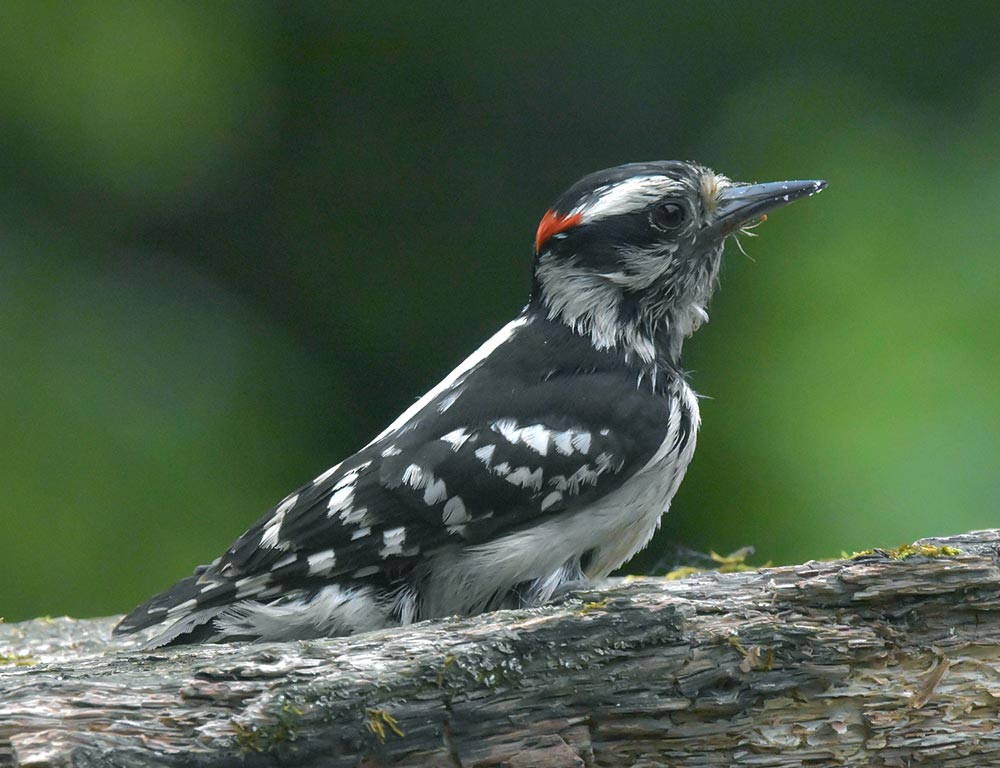
- Scientific name: Picoides pubescens
- Population: Common and widespread.
- Life span: Typically 4-7 years in the wild.
- Size: Adults are around 6.7-9.1 inches in length.
- Weight: Weighs about 0.7-1.0 ounces.
- Food: Insects, especially wood-boring beetles, and seeds.
- Wingspan: Approximately 9.8-12.2 inches.
The Downy Woodpecker, a familiar sight in Georgia, is a small and agile bird. With its distinctive black and white plumage and a relatively short bill, it’s often found in various wooded habitats.
Downy Woodpeckers are skilled foragers, using their specialized bills to extract insects from tree bark.
They are known for their drumming sounds and can be observed hopping up and down tree trunks in search of food. These woodpeckers are adaptable, residing in both deciduous and coniferous forests, as well as suburban areas.
2. Red-headed Woodpecker
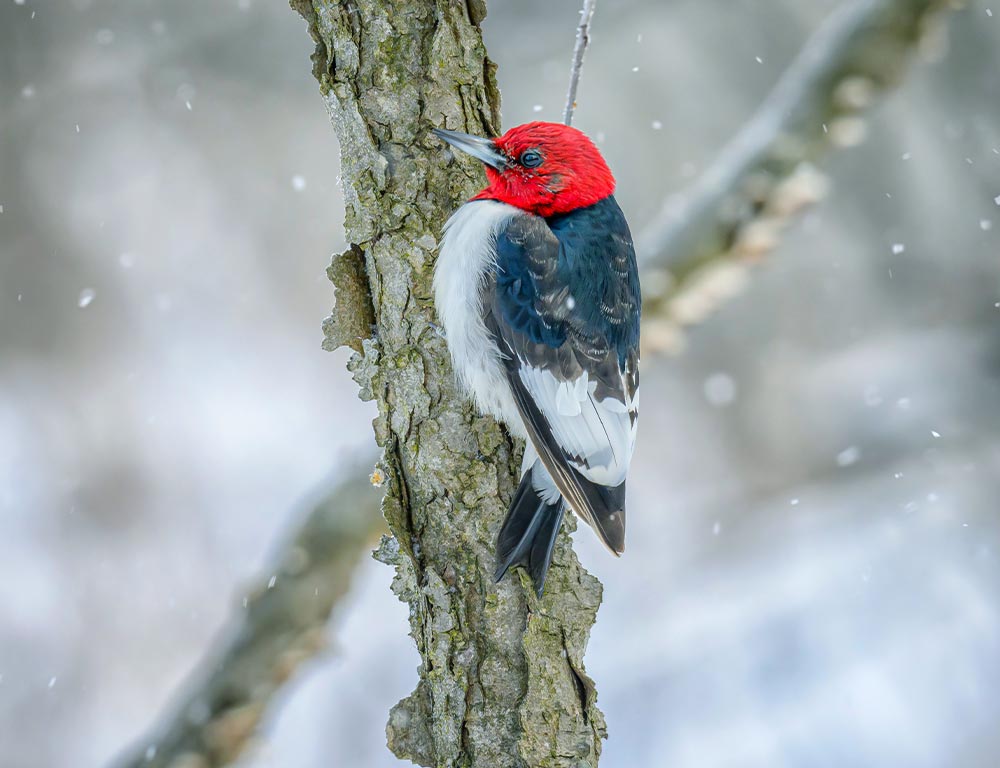
- Scientific name: Melanerpes erythrocephalus
- Population: Declining, with conservation concern.
- Life span: Typically 9-12 years in the wild.
- Size: Adults range from 7.5 to 9.8 inches in length.
- Weight: Weighs about 2.0-3.2 ounces.
- Food: Insects, fruits, nuts, and seeds.
- Wingspan: Approximately 16.5-17.7 inches.
The Red-headed Woodpecker is a striking bird with a vibrant redhead and a contrasting black and white body. Their population faces challenges in Georgia, but they can be found in open woodlands.
These woodpeckers are skilled aerial acrobats, catching insects mid-air and storing surplus food in tree crevices. Their diet includes various items such as nuts, fruits, and even small vertebrates.
Known for their unique habit of catching insects in flight, Red-headed Woodpeckers contribute to ecosystem balance while adding a splash of color to the Georgia landscape.
3. Pileated Woodpecker
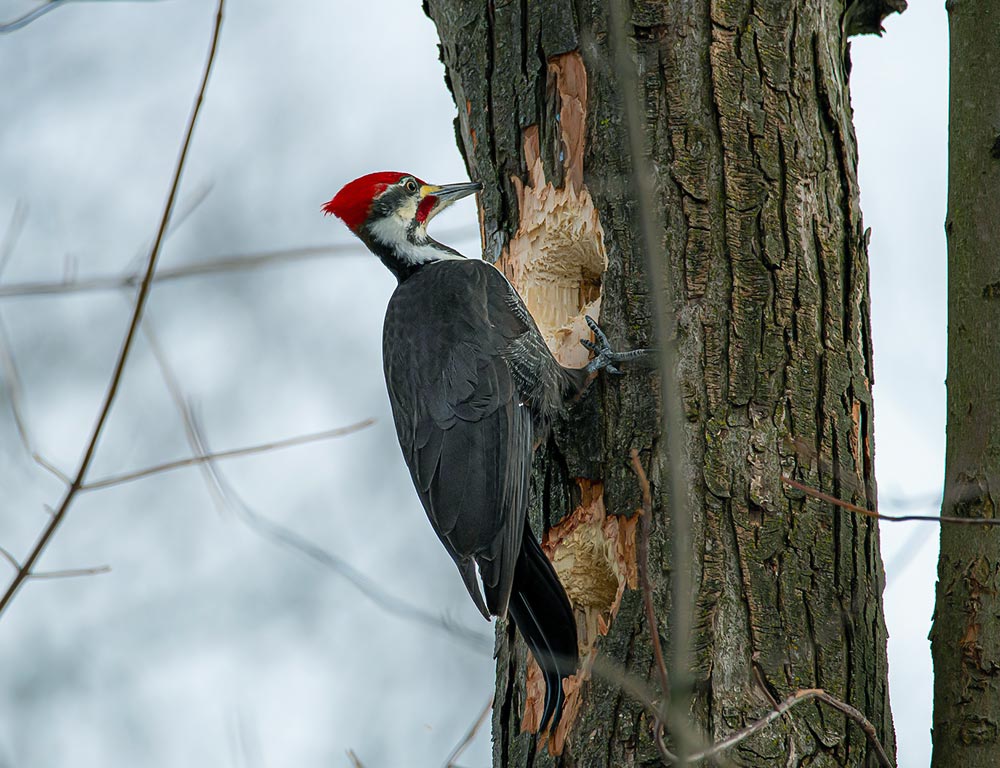
- Scientific name: Dryocopus pileatus
- Population: Stable and common in suitable habitats.
- Life span: Typically 7-10 years in the wild.
- Size: Adults range from 16-19 inches in length.
- Weight: Weighs about 8-12 ounces.
- Food: Insects, especially carpenter ants, wood-boring beetle larvae, and fruits and nuts.
- Wingspan: Approximately 26-29 inches.
With its striking red crest and large size, the Pileated Woodpecker is an iconic species in Georgia’s woodlands. These impressive birds are often found in mature forests, where they excavate large rectangular holes in trees in search of insects.
Pileated Woodpeckers have a distinctive drumming sound that resonates through the woods. Their impressive size and powerful bills make them efficient foragers.
Pileated Woodpeckers play a role in maintaining forest health by controlling insect populations. Despite their size, they are agile flyers, easily navigating through the trees.
In Georgia, the presence of these woodpeckers is a testament to the state’s biodiversity and the health of its woodland ecosystems.
4. Red-bellied Woodpecker
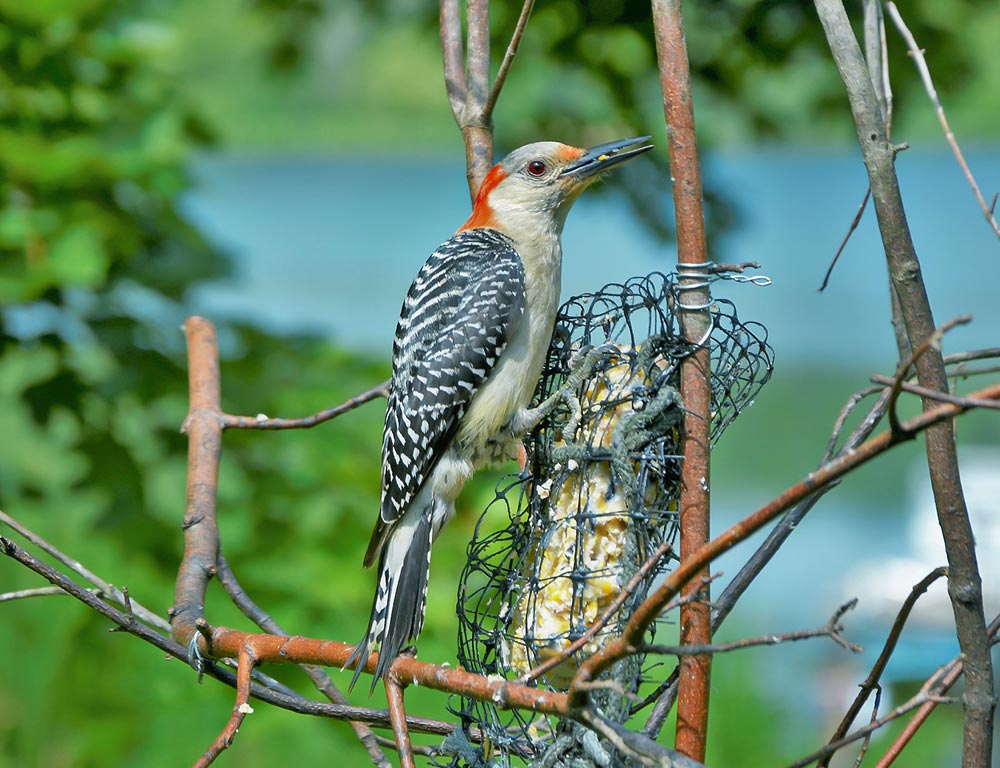
- Scientific name: Melanerpes carolinus
- Population: Abundant and widespread.
- Life span: Typically 2-4 years in the wild.
- Size: Adults are around 9-10.5 inches in length.
- Weight: Weighs about 2.0-3.2 ounces.
- Food: Omnivorous, feeding on insects, fruits, nuts, and seeds.
- Wingspan: Approximately 13-16 inches.
The Red-bellied Woodpecker is a common and adaptable species in Georgia’s varied habitats. Despite its name, the red on its belly is often faint.
These woodpeckers are known for their distinctive zebra-striped backs and their habit of caching food in tree crevices.
Their omnivorous diet includes insects, fruits, nuts, and seeds. Red-bellied Woodpeckers are often observed exploring trees, using their strong bills to probe for insects under the bark.
Their adaptability allows them to thrive in both urban and woodland environments, making them a familiar sight for birdwatchers.
5. Red-cockaded Woodpecker
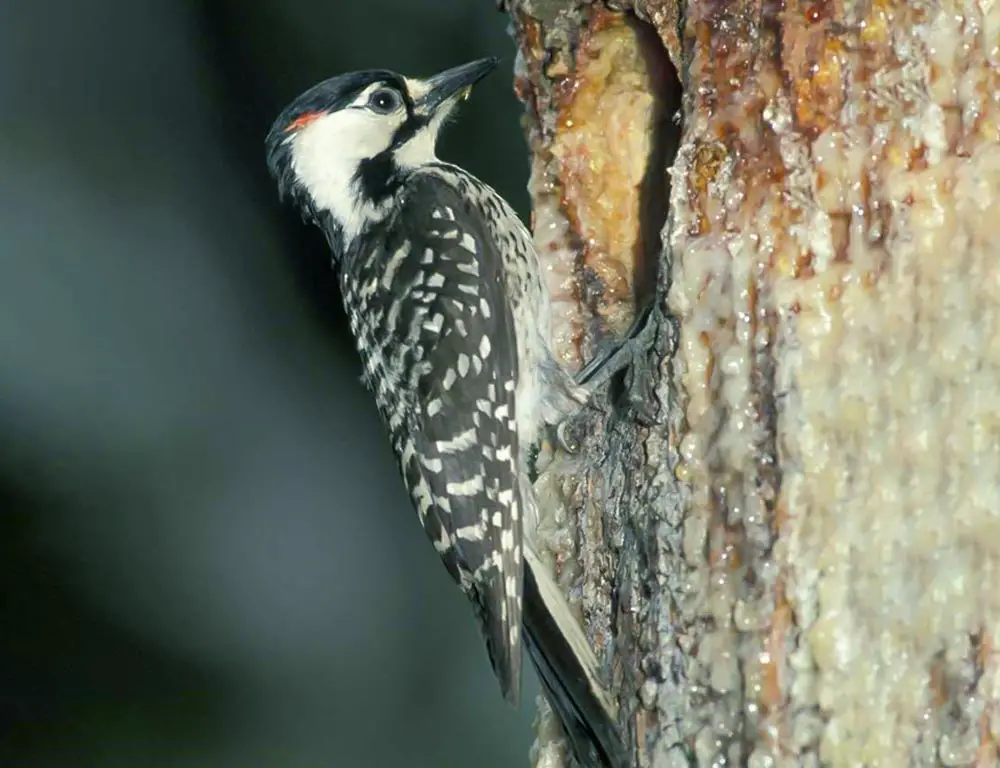
- Scientific name: Leuconotopicus borealis
- Population: Declining, listed as endangered in some regions.
- Life span: Typically 4-6 years in the wild.
- Size: Adults range from 7-9 inches in length.
- Weight: Weighs about 1.5-2.5 ounces.
- Food: Primarily feeds on insects, especially ants.
- Wingspan: Approximately 14-16 inches.
The Red-cockaded Woodpecker is an endangered species in parts of its range, including some areas in Georgia.
This woodpecker is associated with mature pine forests, where it excavates cavities in living pine trees. These cavities are essential for nesting and roosting.
Red-cockaded Woodpeckers primarily feed on insects, particularly ants, and their conservation is closely tied to preserving longleaf pine ecosystems.
Efforts to conserve and restore these habitats are crucial for the survival of the Red-cockaded Woodpecker in Georgia.
6. Hairy Woodpecker
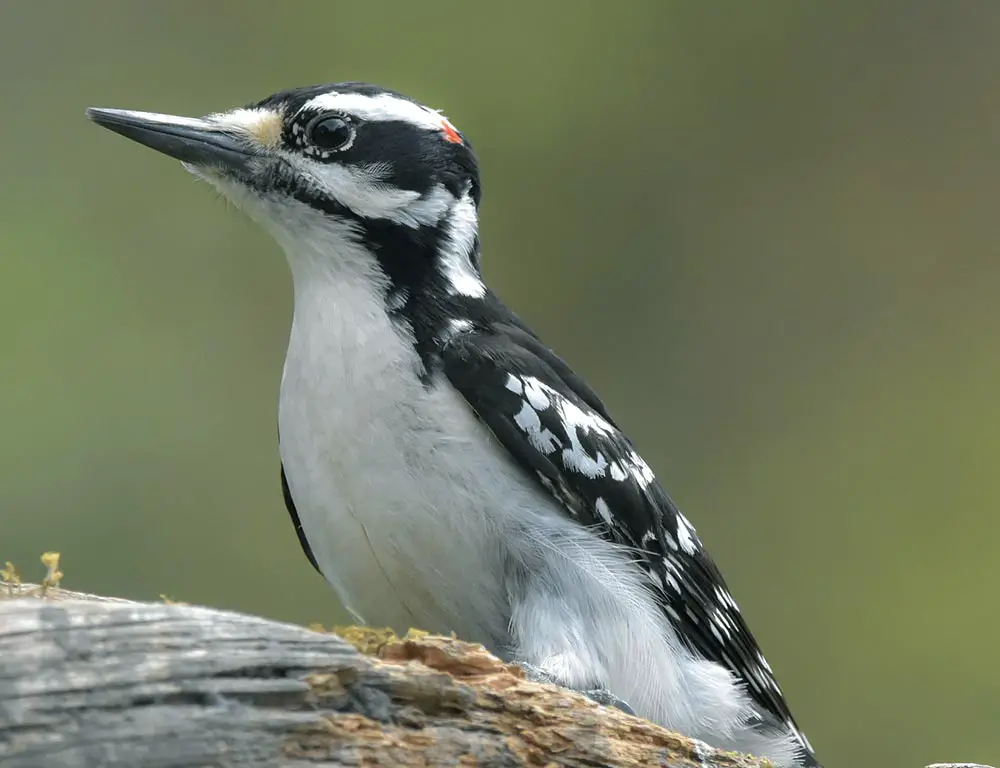
- Scientific name: Leuconotopicus villosus
- Population: Stable and widespread.
- Life span: Typically 4-6 years in the wild.
- Size: Adults are around 7-10 inches in length.
- Weight: Weighs about 2.0-3.5 ounces.
- Food: Feeds on insects, spiders, and tree sap.
- Wingspan: Approximately 13-17 inches.
The Hairy Woodpecker is a common and widespread species in Georgia, often found in various wooded habitats. Resembling the Downy Woodpecker but larger, the Hairy Woodpecker is distinguished by its larger size and longer bill.
These woodpeckers forage on tree trunks and branches for insects, spiders, and tree sap. They are known for their drumming sounds, which they use to communicate and establish territory.
Hairy Woodpeckers are important contributors to forest ecosystems, helping control insect populations. Their ability to adapt to various environments makes them a resilient and successful species in Georgia’s diverse landscapes.
7. Northern Flicker
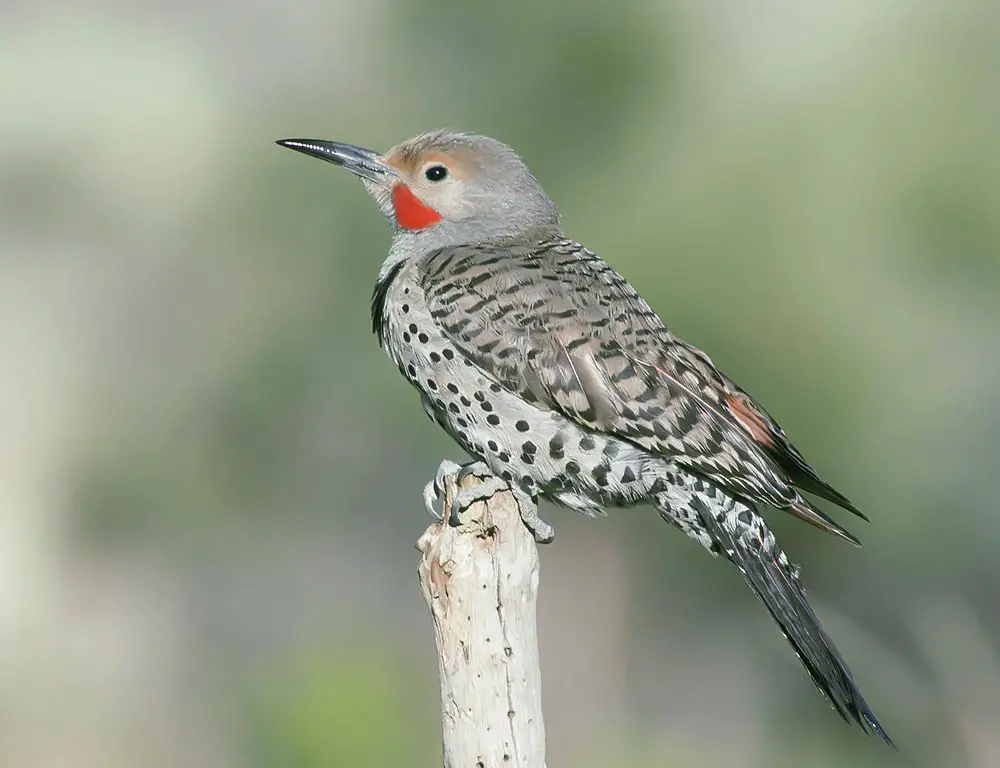
- Scientific name: Colaptes auratus
- Population: Abundant and widespread.
- Life span: Typically 6-7 years in the wild.
- Size: Adults are around 11-14 inches in length.
- Weight: Weighs about 3-5 ounces.
- Food: Primarily feeds on insects, especially ants, fruits, and seeds.
- Wingspan: Approximately 17-21 inches.
The Northern Flicker is a common and distinctive woodpecker found in various habitats across Georgia.
Recognized by its striking plumage, including a prominent black crescent on its chest, these woodpeckers are often seen foraging on the ground for ants.
They also feed on fruits and seeds. Northern Flickers are known for their rhythmic drumming and unique vocalizations.
They nest in tree cavities or use abandoned nests of other birds. Unlike many other woodpecker species, Northern Flickers are equally comfortable foraging on the ground, using their long bills to extract insects from the soil.
8. Ivory-billed Woodpecker
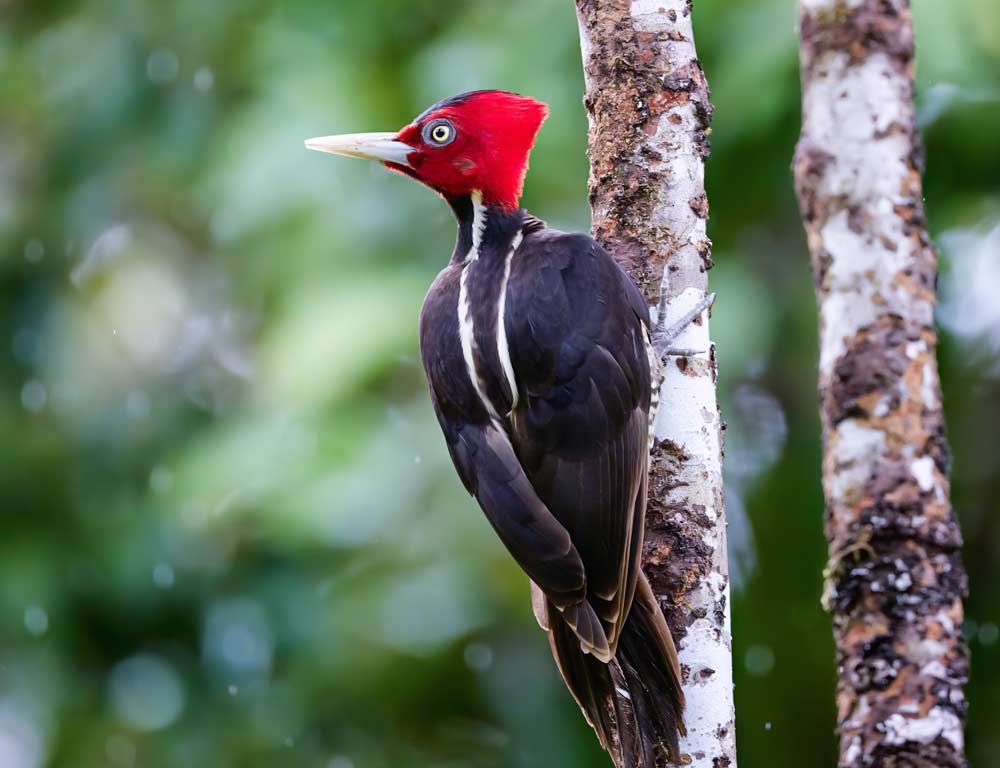
- Scientific name: Campephilus principalis
- Population: Critically endangered, possibly extinct, or very rare.
- Life span: Estimated to be 10-15 years.
- Size: Large, with adults reaching 18-20 inches in length.
- Weight: Weighs about 1.0-1.5 pounds.
- Food: Primarily feeds on insects, especially beetle larvae, and occasionally fruits.
- Wingspan: Approximately 30-31 inches.
The Ivory-billed Woodpecker, once widespread, is now critically endangered and possibly extinct. Historically, it inhabited bottomland hardwood forests in the southeastern United States, including parts of Georgia.
Recognizable by its large size and distinctive black and white plumage, this woodpecker was a symbol of the region’s rich biodiversity.
The main threats to its existence have been habitat loss and logging. Conservation efforts aim to preserve potential habitats and, if possible, rediscover populations of this elusive species.
9. Yellow-bellied Sapsucker
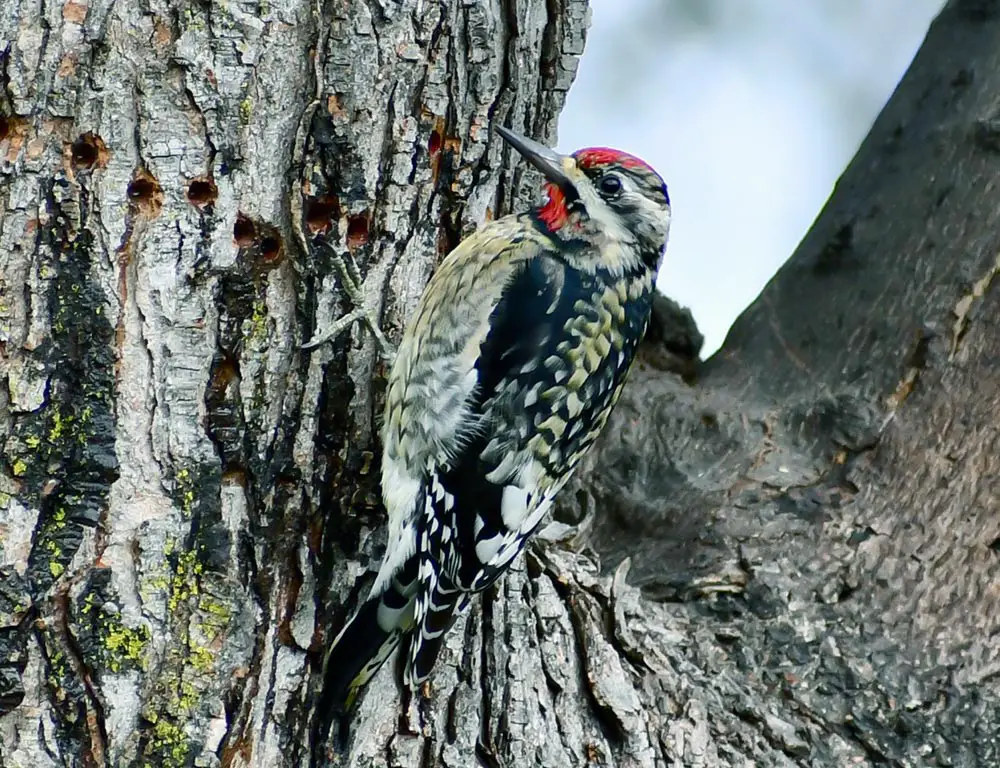
- Scientific name: Sphyrapicus varius
- Population: Stable, migratory species.
- Life span: Typically 4-7 years in the wild.
- Size: Adults are around 7-8.5 inches in length.
- Weight: Weighs about 1.5-2.4 ounces.
- Food: Primarily feeds on sap, as well as insects and fruits.
- Wingspan: Approximately 13-16 inches.
The Yellow-bellied Sapsucker is a migratory woodpecker that breeds in northern forests and winters in the southeastern United States, including Georgia.
Distinguished by its black and white plumage and a yellowish wash on its belly, these woodpeckers are known for their unique feeding behavior. They drill small holes in trees to feed on sap, attracting insects.
Yellow-bellied Sapsuckers create distinct rows of holes called sap wells. During migration, they can be spotted in a variety of wooded habitats, including both coniferous and deciduous forests, as well as orchards.
How to Preserve Woodpeckers in Georgia?
Preserving woodpeckers in Georgia involves a combination of habitat conservation, public awareness, and adherence to conservation practices.
Georgia is home to several woodpecker species, including the Red-cockaded Woodpecker, Pileated Woodpecker, and others. Here are some ways to contribute to the preservation of woodpeckers in Georgia:
Habitat Conservation
Support and engage in habitat conservation efforts. Woodpeckers require specific habitats with mature trees for nesting and foraging.
Participate in or support initiatives that focus on preserving and restoring these habitats, especially in areas where woodpecker populations are at risk.
Preserve Pine Forests
Many woodpecker species, including the Red-cockaded Woodpecker, are associated with pine forests.
These ecosystems are crucial for their survival. Advocate for protecting pine forests and support sustainable forestry practices that maintain suitable woodpecker habitats.
Wildlife Corridors
Advocate for the creation and preservation of wildlife corridors. These connective landscapes allow woodpeckers and other wildlife to move between different habitats, promoting genetic diversity and resilience in populations.
Prescribed Burns
Some woodpecker species benefit from prescribed burns, such as the Red-cockaded Woodpecker.
These burns help maintain open pine forests and reduce the risk of catastrophic wildfires. Support controlled and well-managed prescribed burn programs.
Nesting Site Protection
Protect and respect known nesting sites of woodpeckers. Many woodpeckers, including the Red-cockaded Woodpecker, nest in cavities in live pine trees.
Conservation efforts often involve installing artificial cavities and protecting existing trees with active nests.
Invasive Species Management
Invasive species like the non-native red imported fire ant can negatively impact woodpecker populations. Support efforts to manage and control invasive species that can disrupt woodpecker habitats and prey availability.
Public Education
Raise awareness about the importance of woodpeckers and their role in ecosystems. Public education programs can help people understand the ecological significance of woodpeckers and the need to conserve their habitats.
Avoid Disturbance
Minimize disturbance around woodpecker habitats, especially during the breeding season. Loud noises, excessive human activity, and disturbances near nesting sites can stress woodpeckers and affect their reproductive success.
Community Engagement
Engage with local communities to promote woodpecker conservation. Collaborate with residents, landowners, and local authorities to implement sustainable land management practices that benefit woodpeckers and their habitats.
Citizen Science Programs
Participate in citizen science programs that monitor woodpecker populations. Reporting sightings, nesting activity, and other observations contributes valuable data for researchers and conservationists.
Collaborate with Conservation Organizations
Work with conservation organizations, such as the Georgia Department of Natural Resources and local Audubon societies, to stay informed about woodpecker conservation initiatives and participate in relevant projects.
Preserving woodpeckers in Georgia requires a holistic approach involving individual and community efforts.
By actively participating in habitat conservation, promoting awareness, and supporting initiatives that benefit woodpeckers, individuals can contribute to the well-being and sustainability of these important bird species.
Wrapping Up
Woodpeckers in Georgia play a vital role in maintaining ecosystem health. These industrious birds contribute to biodiversity, control insect populations, and support healthy forests.
The preservation of their habitats, such as pine forests and wildlife corridors, and the conservation of nesting sites is essential for the continued well-being of woodpecker species.
Public awareness, responsible land management, and community engagement are key to successful woodpecker conservation efforts.
By understanding and valuing the ecological significance of woodpeckers, individuals and communities in Georgia can actively contribute to the sustainability of these fascinating birds and the diverse ecosystems they inhabit.